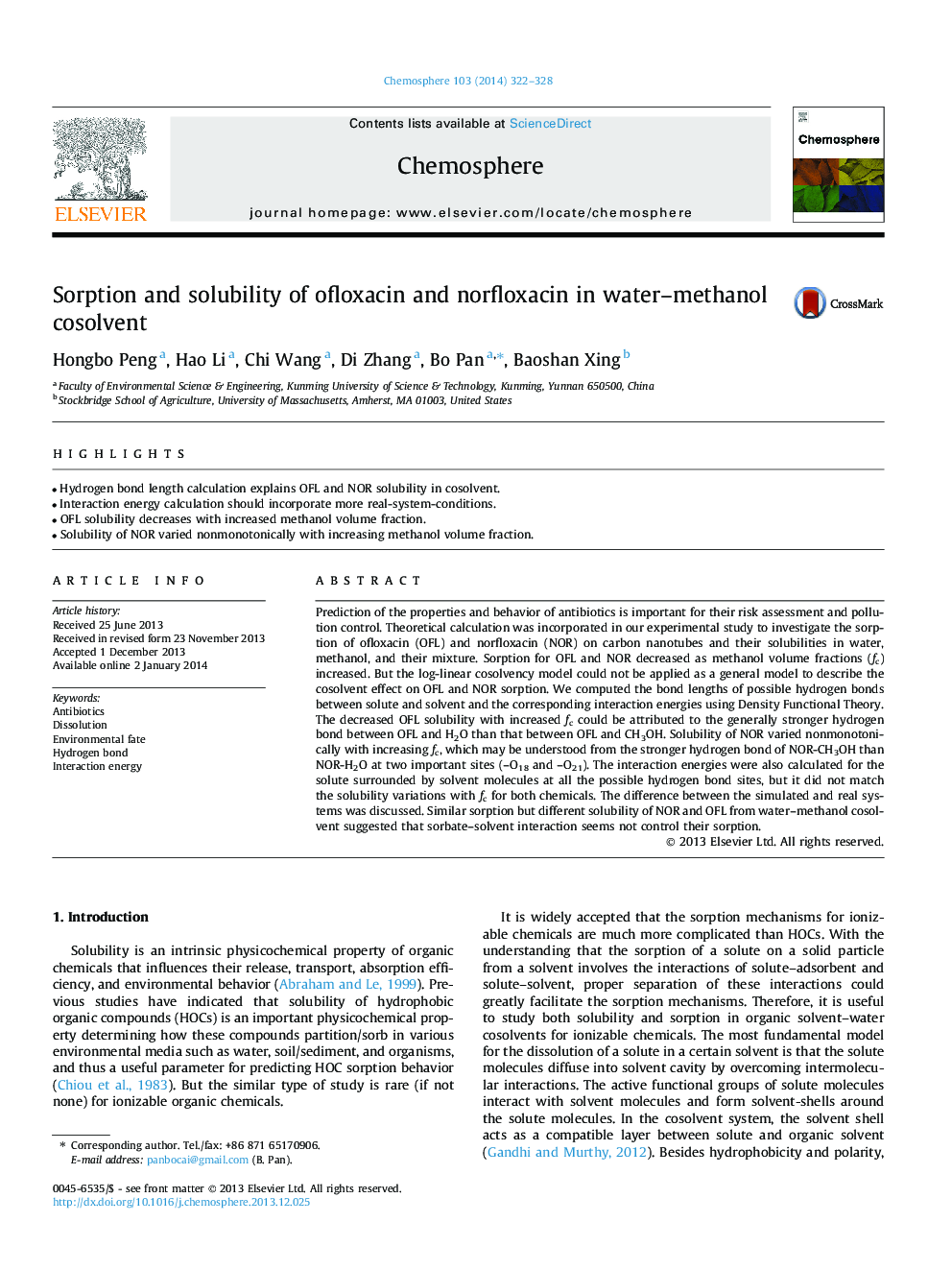| Article ID | Journal | Published Year | Pages | File Type |
|---|---|---|---|---|
| 6309301 | Chemosphere | 2014 | 7 Pages |
â¢Hydrogen bond length calculation explains OFL and NOR solubility in cosolvent.â¢Interaction energy calculation should incorporate more real-system-conditions.â¢OFL solubility decreases with increased methanol volume fraction.â¢Solubility of NOR varied nonmonotonically with increasing methanol volume fraction.
Prediction of the properties and behavior of antibiotics is important for their risk assessment and pollution control. Theoretical calculation was incorporated in our experimental study to investigate the sorption of ofloxacin (OFL) and norfloxacin (NOR) on carbon nanotubes and their solubilities in water, methanol, and their mixture. Sorption for OFL and NOR decreased as methanol volume fractions (fc) increased. But the log-linear cosolvency model could not be applied as a general model to describe the cosolvent effect on OFL and NOR sorption. We computed the bond lengths of possible hydrogen bonds between solute and solvent and the corresponding interaction energies using Density Functional Theory. The decreased OFL solubility with increased fc could be attributed to the generally stronger hydrogen bond between OFL and H2O than that between OFL and CH3OH. Solubility of NOR varied nonmonotonically with increasing fc, which may be understood from the stronger hydrogen bond of NOR-CH3OH than NOR-H2O at two important sites (-O18 and -O21). The interaction energies were also calculated for the solute surrounded by solvent molecules at all the possible hydrogen bond sites, but it did not match the solubility variations with fc for both chemicals. The difference between the simulated and real systems was discussed. Similar sorption but different solubility of NOR and OFL from water-methanol cosolvent suggested that sorbate-solvent interaction seems not control their sorption.
